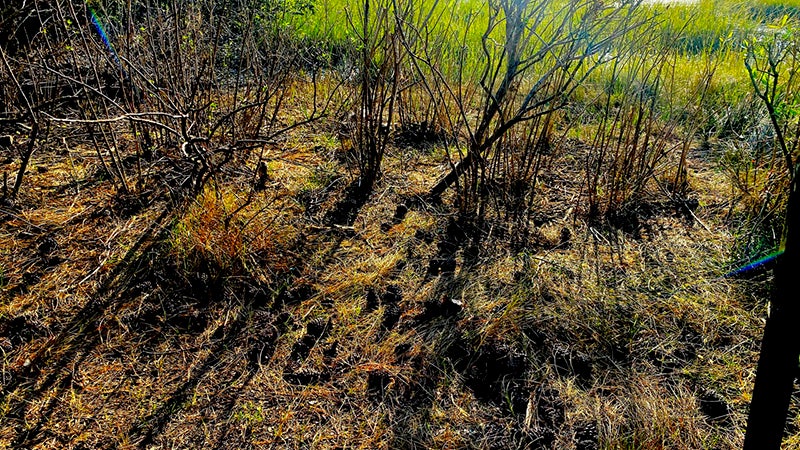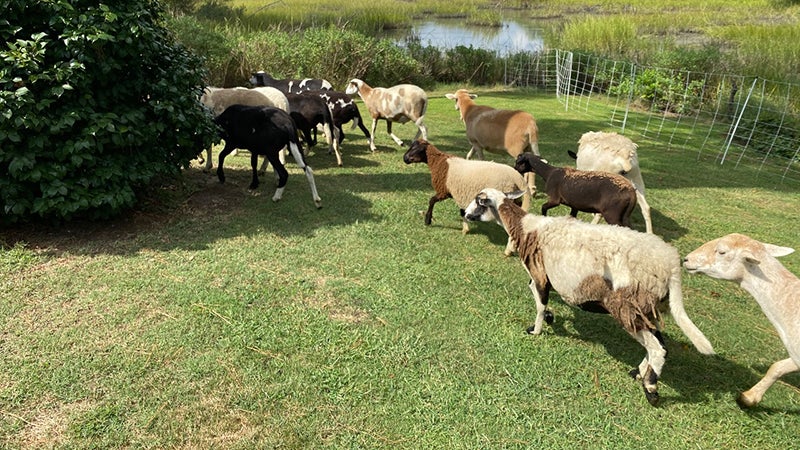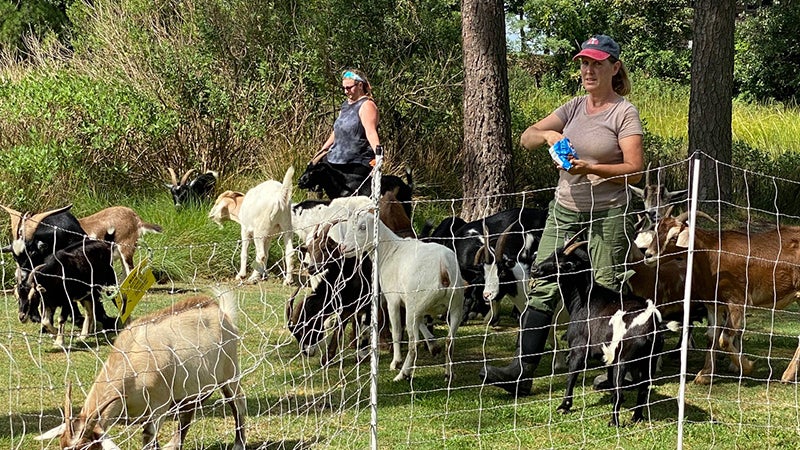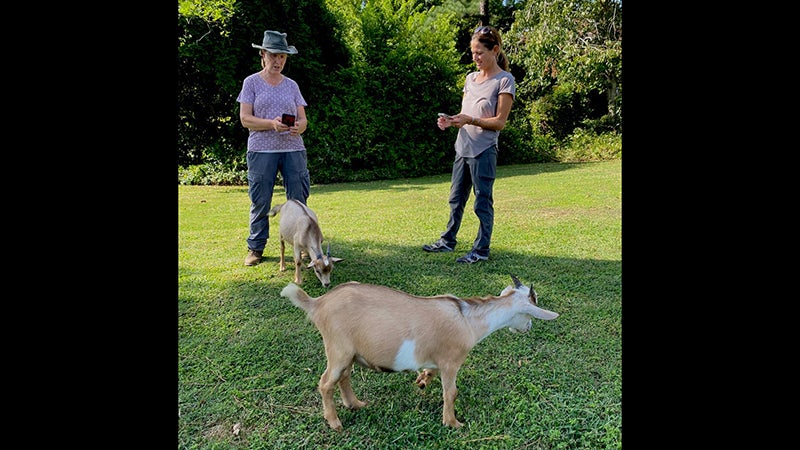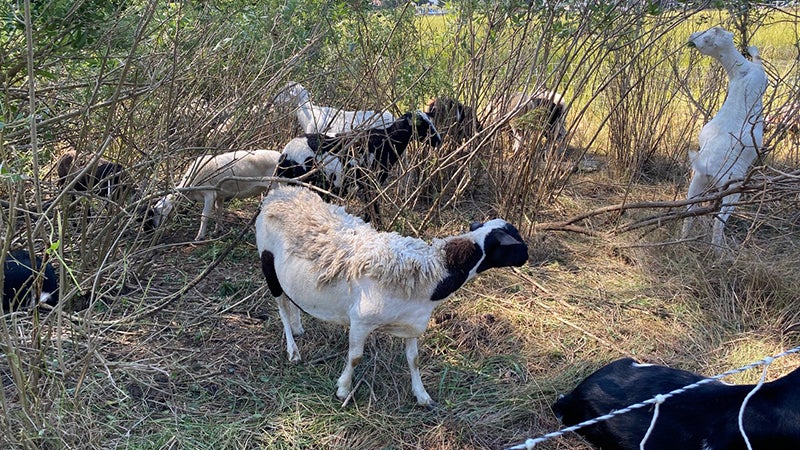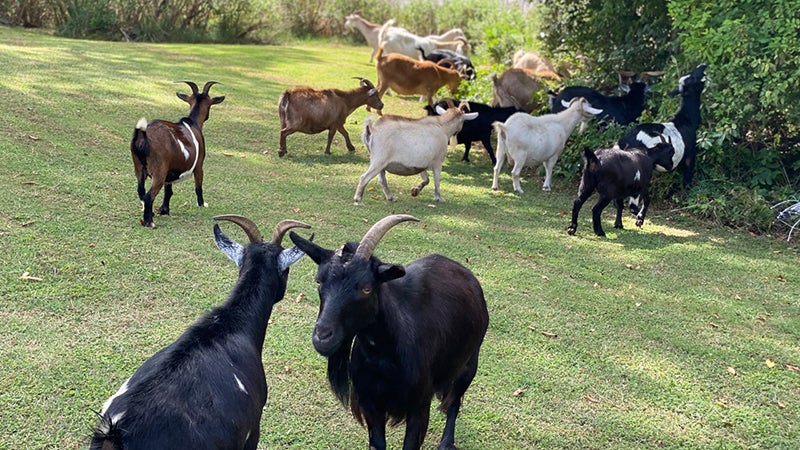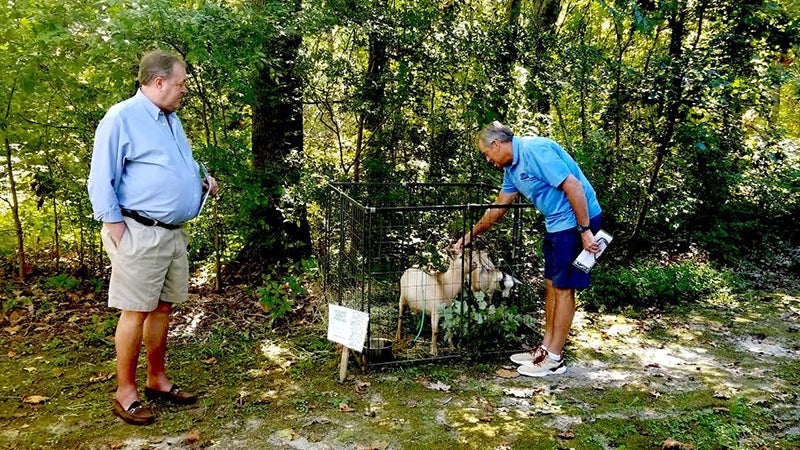No job too big, no goat too small
Published 2:16 pm Friday, January 21, 2022
|
Getting your Trinity Audio player ready...
|
Story by Phyllis Speidell
Photos by John H. Sheally II
Chico and Pesto could be the cuddly stars of a petting zoo, but their mid-September visit to Hoffler Creek Wildlife Preserve was all business.
The two young goats, each just 16 weeks old, are the advance guard of a working herd of goats and sheep hired to eradicate unruly wisteria encroaching on four acres of the preserve, rendering it unusable.
Half-brothers and best friends, Chico and Pesto eagerly sampled the greenery along the banks of Hoffler Creek where it divides North Suffolk from western Churchland. After taste-testing the foliage, the pair determined, ah yes! — these bushes would appeal to their flock of more mature, experienced goatscapers. At the age of about 7 months, the two kids will be strong enough to fully join the working herd from RVA Goats and Honey in Chesterfield.
Kristi Orcutt, an environmental education specialist, owns and manages the farm-based RVA Goats and Honey. She suggests, “Put away the herbicide and hire herbivores,” as an ecologically responsible first step in landscape control.
Of the 100 or so animals on her farm, about 90 are goats and sheep, all rescues skilled in quietly and efficiently defoliating an area. She considers the animals working pets, with full health care benefits. At the jobsite, a guard dog provides protection from predators. A human caretaker stays with the herd as well to check on their progress, make sure they have clean water and extra hay or weather tarps as needed.
Orcutt added that the goats are with the business for life — never retired and never sold for meat. In the rare event that one finds a new home, the new owner is fully vetted, with follow-ups after the adoption.
Goats nimbly negotiate obstacles such as stumps, fallen trees and steep inclines. If they cannot reach the tallest leaves, Orcutt said, they climb the bush and munch their way back down. While goats look up to clear the bushes, sheep look down to clear the ground, grazing on grasses and weeds. In hot weather, the goats will sleep during the day and eat all night.
Orcutt explained that as goats munch, their bellies swell. They eat continually for an hour or so and then rest, chewing their cud as the food ferments in their four-section stomachs, before resuming their work. Their tiny pellets of waste restore the soil source, with any seeds in their excrement so decimated that there is little potential for foliage regrowth.
Two days after Chico and Pesto surveyed the jobsite, the working flock arrived, greeted by several neighbors from the Rivershore Road cul-de-sac where the goatscapers made their entry into the Hoffler Creek preserve. Richard Walters was delighted to finally have help battling the overgrowth creeping into his backyard from the preserve. He trims back the encroaching vines threatening to engulf his stack of firewood and rack of kayaks — but it’s a lost cause.
“You cannot bushwhack your way into there now — it’s a mess!” he said.
The goats and sheep waited restlessly in their two trailers as Orcutt, assisted by a couple helpers and the neighbors, unrolled low-voltage electric fencing to create a corridor. The path guided the animals to the preserve with little opportunity to wander into the neighborhood. The creek was less of an escape option because goats don’t like wet feet and the volunteers were ready to corral any would-be runner. Just in case, Orcutt carried her secret weapon, a plastic treat bag filled with Cheerios — effective, she said, “Because goats like anything that crunches and will run to the crinkle of the bag.”
The four-legged landscapers hit the ground ready to work, but first — lunch! They munched their way along the path like it was a salad bar. The sheep sedately sampled the grasses while the playful goats ran from bush to bush, eager to taste each one before trotting into the preserve’s tangle of bushes, vines and small trees.
The herd went to work with an audible chorus of munching and chomping. When Billy, the lead goat, plunged into his chosen bush, the others gave way.
“They listen to Billy,” Orcutt said, “And Billy listens to me.”
Once the goatscapers clear the greenery, Orcutt explained, it’s possible, with an unobstructed view of the property, to maneuver into the area to cut out invasive vines attacking the mature trees. Defoliated plants are weaker and more susceptible to manual pulling or herbicides if those are the next chosen step in the landscape control plan.
The Hoffler Creek preserve was once the Ballard family truck farm that predated the Civil War. The farmhouse sat on the four now overgrown acres. Mrs. Ballard loved flowers and planted gardens around the house — and possibly a few decorative wisterias.
After the goats left Oct. 1, Ashley Morgan, executive director of the preserve, said that the goats’ mission was to take the first step toward managing the wisteria — and it was a success.
“The goats cleared enough to allow volunteers into the area to take the next step,” she said. “We will be working with volunteer groups throughout the fall, winter and early spring to cut vines from the trees and remove as much of the defoliated vegetation as possible. We hope to have RVA Goats back in the spring to manage the new growth.”
The Southeast Virginia Community Foundation and the Rotary Club of Portsmouth funded the goatscaping project.
Patrick Ball, senior project scientist for Old Dominion University’s Virginia Modeling, Analysis and Simulation Center, shot drone footage of the goatscaping progress to create a report for the university on the environmental value of using goatscapers.
“When I looked at the before and after footage, I was gob-smacked,” he said. “I have never seen anything like that before — it looked to be that effective.”


